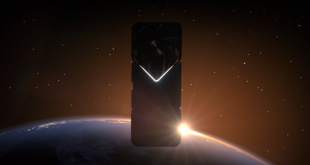The ASRock Z68 Extreme7 Gen3 arrives in a dark box with only the name of the product on the front and a brief listing of some of the product specifications along the bottom.
The box opens up into a gatefold design with some technical data listed on the left, and the product exposed behind a plastic shield on the right. We were immediately drawn to the beautiful, yet slightly menacing appearance of the board.
The bundle is as impressive as we would have hoped. They include multiple 6GBps sata cables, install guide, literature, a backplate, driver and software disc, 3.5 inch audio cable and two molex to sata power connectors. Additionally there is a USB 3.0 front panel header and a 2 way and 3 way SLI bridge.
The board looks black when viewed from a distance, but when placed under direct light it is actually a very dark brown. The slots are all black, and the various heatsinks are black with silver accenting. We think this looks fantastic.
The board is heavily populated with the highest quality gold capacitors which not only ensure maximum stability and long life, but they look great against the dark PCB and heatsink design. There is an eight pin CPU power connector here, next to one of the heatsinks.
The board has four memory slots, with maximum support for 32GB of DDR3. The Extreme7 Gen3 supports memory speeds right up to 2133mhz with XMP profiles.
One of the main selling points with this product is the graphics card and PCIe support. There are no less than five PCIe x16 slots with a single PCIe x1 and legacy PCI slot.
Not all the slots will run at x16, but ASRock have adopted the NF200 chip to improve overall performance. When using Slot 1 and Slot 3 there is full x16/x16 bandwidth offered. When using 3 way configurations then x16/x8/x8 is supported from Slots 1, 3 and 5. Asrock have adopted the PEX8608 chip into the Extreme7 Gen3 motherboard.
PCIe 2 is the PCIe 3.0 slot which is directly related to the ‘Gen3' naming of the product. There is no product on the market yet to fully utilize this slot, but the next generation of graphics cards will take advantage of the extra bandwidth capabilities.
There are a total of ten SATA ports along the side. The black ports are SATA II rated which run natively from the Z68 chipset. The six grey slots are SATA III rated. The first two run from the Z68 natively and the next four run from the ASMedia ASM1061 controller.
Along the bottom of the board is a High Definition Audio header, HDMI, S/PDIF, FireWire, 3x USB 2.0 headers, a (very useful) LED debug readout with a Power reset, and clear CMOS button. We never had to use the clear CMOS button throughout testing as the board was able to reset failed settings automatically. Still it is very nice to have, just in case something goes badly wrong.
It may seem like a small point, but ASRock have not skimped on the fan header connectors, with 3 in the region of the CPU socket alone. We have looked at some expensive motherboards in recent months which seem to only include the bare minimum of fan headers.
The rear I/O plate is loaded. There are twin LAN GB lan connectors which offering a ‘teaming' mode. This allows two single connections to act as one single connection for twice the transmission bandwidth, making data transmission more effective. We tested this and found it did enhance overall bandwidth speed across a fast network.
On the left are two USB 3.0 ports which run from the ASMedia ASM1042 controller chip. There are also VGA, DVI, HDMI and Displayport connectors beside this. Moving to the right are 2 USB 2.0 ports, a combo eSATA/USB 2.0 port and a FireWire port. Next to this is the second LAN connector above two more USB 3.0 headers. At the right are all the audio connectors which run from the RealTek ALC892 chip.
 KitGuru KitGuru.net – Tech News | Hardware News | Hardware Reviews | IOS | Mobile | Gaming | Graphics Cards
KitGuru KitGuru.net – Tech News | Hardware News | Hardware Reviews | IOS | Mobile | Gaming | Graphics Cards


















Very nice indeed, looks great. I need a system upgrade, it kills me everytime I read a review of a new mobo 🙁
Yeah they are really good now, I hate however how some forums have idiots who are ‘experts’ who say they still suck. I have a P67 board of theirs (B3) and it is brilliant, never a problem. hits 4.6ghz with my 2500k no problem too.
x16/x16 is quite rare on these systems. good job ASROCK. bit expensive though isnt it?
This $275 board is meant for triple card multi-monitor setups, and is in direct competition with the $350 Maximus IV Extreme-Z, $360 UD7, $370 G1. Sniper2 budget and $310 FTW.
IMO, if a current triple-CF/SLI setup is the priority and you already own a dedicated SSD, sacrificing the Z68 futures for the $235 P67 WS Revolution is a better deal.
AFAIK, the NF200 bridge/switch is PCIe 2.0. If it is to handle the traffic from 3 PCIe slots to the CPU, then how will do it at PCIe 3.0 speed with PCIe 3.0 video cards and CPU??
Ramon
Why are the first two pci-e slots so close together?
@ Carl. The second slot is the PCIE 3.0 compatible one. If you use SLI etc, I think you are meant to use slot 1 and 3.
Wich setting in the bios do have you change in the bios to achieve 4,6ghz?